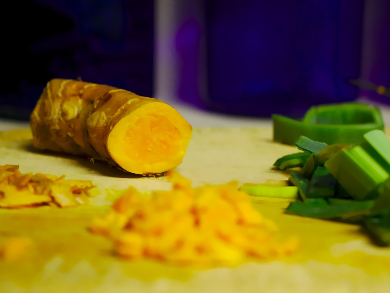Curcumin is a plant polyphenol responsible for the yellow color of turmeric. It is widely used as a food dye and is currently the subject of over 100 NIH-registered human clinical trials for a range of proposed health benefits.
Studies in animals have shown that curcumin offers protection against neurodegenerative diseases. It is not known exactly how curcumin does this, but researchers believe that it somehow interacts with amyloid-β peptides, thought to be the principle pathogens in Alzheimer’s disease. Amyloids self-aggregate and form insoluble tangles of fibrils (“plaques”) in the brain. These plaques are toxic to nerve cells, causing loss of brain function.
Eva Chi and colleagues, University of New Mexico, USA, found that although curcumin does not stop the formation of amyloid-β fibrils, it causes them to form nontoxic soluble aggregates instead of insoluble plaques. They also showed the protection of human cells against a range of aggregates by the compound, and speculate that curcumin interferes with amyloid disruption of cell membranes. These findings raise hopes that this small molecule might provide clues towards the treatment or prevention of age-related neurological conditions.
- Curcumin Attenuates Amyloid-β Aggregate Toxicity and Modulates Amyloid-β Aggregation Pathway,
Arjun Thapa, Stephen D. Jett, Eva Y. Chi,
ACS Chem. Neurosci. 2015.
DOI: 10.1021/acschemneuro.5b00214


